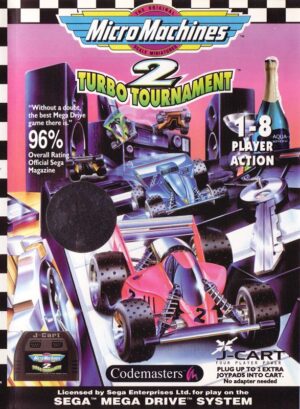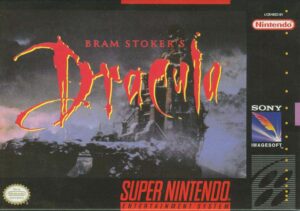Retro Replay Review
Gameplay
Bishōjo Senshi Sailor Moon S: Jōgai Rantō!? Shuyaku Sōdatsusen delivers a straightforward yet charming fighting system that will feel familiar to fans of classic 2D fighters. Players can choose from the core Sailor Guardians—Usagi (Sailor Moon), Ami (Sailor Mercury), Rei (Sailor Mars), Makoto (Sailor Jupiter), and Minako (Sailor Venus)—each with a unique move set. Standard punches and kicks combine with special attacks drawn straight from the animé, such as Sailor Mercury’s Bubble Spray and Sailor Mars’ Fire Soul, creating an accessible package for newcomers and aficionados alike.
(HEY YOU!! We hope you enjoy! We try not to run ads. So basically, this is a very expensive hobby running this site. Please consider joining us for updates, forums, and more. Network w/ us to make some cash or friends while retro gaming, and you can win some free retro games for posting. Okay, carry on 👍)
The controls are intuitive, relying on a six-button layout that splits light, medium, and heavy attacks. Executing special moves typically requires simple directional inputs plus an attack button, making flashy combos achievable even for less experienced players. While the depth of advanced canceling or combo chaining is limited compared to genre heavyweights, there is enough variety in timing and spacing to keep matches engaging. CPU opponents ramp up in difficulty in tournament mode, offering a modest challenge for those who want to test their skills.
One of the game’s most appealing features is its inclusion of both single-player tournament mode and local two-player competitive matches. The tournament mode pits you against a gauntlet of fellow Sailor Guardians, culminating in a rematch against a boss character loosely tied to the Moon Kingdom’s darker forces. Meanwhile, the two-player versus mode provides couch co-op fun, letting friends face off in speedy, colorful bouts that never overstay their welcome.
Replay value is bolstered by unlocking hidden color palettes and alternate versions of special attacks each time you defeat certain opponents in tournament mode. While there is no dedicated training mode—common in later fighters—the simple fact of experimenting with each Guardian’s arsenal encourages repeated playthroughs. For anime fans eager to see their favorite characters unleashed in combat, the gameplay loop is satisfyingly immediate, if not deeply complex.
Graphics
Visually, Sailor Moon S opts for bright, hand-drawn 2D sprites that faithfully capture the animé’s signature style. The character portraits and in-battle animations reflect the youthful energy of Tsukino Usagi and her friends, with expressive facial poses and fluid motion. Each Guardian’s special attack is accompanied by a brief visual flourish—sparkles for Sailor Moon’s “Moon Tiara Magic,” swirling water for Sailor Mercury—which recalls the show’s transformation sequences.
Background stages span school rooftops, city streets, and abstract cosmic arenas, each rendered in vivid colors and detailed pixel art. While the number of distinct arenas is modest, they’re varied enough to keep each match feeling fresh. The parallax scrolling effect in certain backgrounds adds depth to the 16-bit presentation, and occasional cut-ins of Luna the talking cat offer delightful fan service between rounds.
On hardware of its era, the frame rate remains consistent, ensuring responsive controls even when special effects occupy the screen. The UI is neatly designed, with life bars and power meters positioned clearly at the top of the screen. Menu screens feature art lifted from the animé’s promotional materials, tying the entire package together in a cohesive aesthetic.
Though it lacks the high-definition polish of modern fighters, the game’s graphics hold up well as a nostalgic snapshot of mid-’90s anime tie-in titles. Colors pop without feeling garish, and the overall presentation is imbued with the same optimism and playful charm that made Sailor Moon a worldwide sensation.
Story
True to its source material, the game’s narrative premise revolves around Tsukino Usagi’s discovery that she is Sailor Moon, a magical warrior destined to protect the Moon Kingdom from dark forces. The in-game story is conveyed primarily through brief text screens and title cards, introducing each Guardian as they enter the tournament designed to test their abilities. Though the storyline isn’t deeply developed in-game, it effectively sets the stage for the fights.
Characters occasionally exchange banter before and after battles, giving glimpses of their personalities—Usagi’s playful determination, Rei’s stoic confidence, and Minako’s energetic flair. These small narrative touches, while lightweight, serve as a nice reward for fans who appreciate character-driven moments. The absence of lengthy cutscenes means the plot never interrupts the core fighting action, but those expecting a full retelling of the Sailor Moon S arc may find the story beats abbreviated.
Ultimately, the game functions more as a celebration of the Sailor Moon universe than a faithful recreation of its intricate plotlines. The emphasis is squarely on delivering an enjoyable combat experience rather than unfolding a complex narrative. Still, the minimal storytelling does enough to tie the tournament premise back to the animé’s themes of friendship, courage, and the battle between light and darkness.
For prospective buyers, it’s important to recognize that the story serves as a backdrop rather than the main event. If your priority is reliving every twist of the Moon Kingdom saga, you may be left wanting. However, if you’re drawn to quick, character-driven bouts with a dash of Sailor Moon lore, the game’s narrative framework is perfectly adequate.
Overall Experience
Bishōjo Senshi Sailor Moon S: Jōgai Rantō!? Shuyaku Sōdatsusen stands out as a charming, fan-focused fighter that captures the essence of its beloved property. Its accessible controls and recognizable special moves make it an ideal gateway for Sailor Moon enthusiasts curious about the fighting genre. At the same time, seasoned players will appreciate the brisk pacing and the nostalgia of pixel art animations.
The game’s strengths lie in its faithful character portrayals, vibrant graphics, and the simple joy of pitting magical schoolgirls against one another in friendly competition. While it doesn’t offer the deep combo systems or extensive rosters of leading fighters from the same era, it compensates with personality and thematic cohesion. Local two-player mode ensures that matches remain lively, and the tournament mode provides just enough challenge to keep solo players engaged.
On the flip side, those seeking a robust fighting experience will note the lack of advanced mechanics such as air combos, multi-level arenas, or deep character customization. The story is functional but limited, and the game’s brevity—common to many licensed titles of its time—may leave completionists yearning for more content.
All told, Sailor Moon S: Jōgai Rantō!? Shuyaku Sōdatsusen is best approached as a delightful piece of Sailor Moon memorabilia that doubles as an enjoyable retro fighter. It’s a recommended purchase for fans of the series, collectors of anime-themed games, or anyone looking for a lighthearted, two-player fighting romp steeped in ’90s charm. Whether you’re defending the Moon Kingdom or simply sharing a controller with a friend, this title offers a whimsical, nostalgia-rich experience worth exploring.
 Retro Replay Retro Replay gaming reviews, news, emulation, geek stuff and more!
Retro Replay Retro Replay gaming reviews, news, emulation, geek stuff and more!









Reviews
There are no reviews yet.